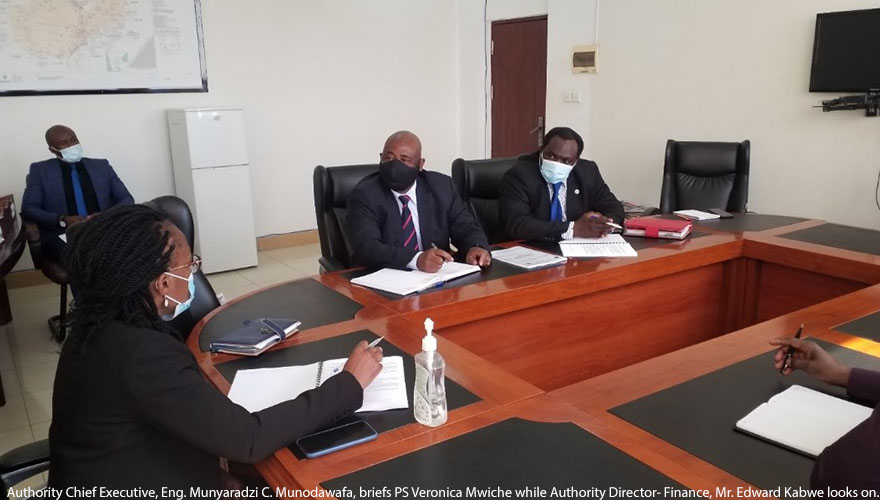
The Zambezi River has the potential to significantly contribute to the electricity supply network of the Southern African Development Community (SADC).
Its efficacious management could eradicate the current electricity supply challenges currently facing the region and it would also ensure increased socio-economic development of the Riparian States.
“The energy potential of the Zambezi River is about 21 GW of hydro-electricity,’ said the Zambezi River Authority’s (ZRA) Chief Executive, Eng. Munyaradzi Munodawafa during a courtesy visit with the newly appointed Permanent Secretary for Energy, Mrs. Veronica Mwiche. Regarding the stretch of the River common to Zambia and Zimbabwe, Eng. Munodawafa added, “Currently, there is only 2 292Mw [installed capacity] at Kariba North and South Power Stations as well as at the Victoria Falls Power Station.” The construction of additional dams and hydro-generation plants at key points of the River such as the Batoka and Devil’s Gorges will ensure that part of this electricity generation potential is realised.
During the briefing, PS. Mwiche was availed an overview of the ZRA from its inception to date and its role in the Zambezi River water and dam management. She was apprised of developments at the Kariba Dam where the plunge pool and spillway are undergoing refurbishment, with financing support of cooperating partners namely the World Bank, the African Development Bank and the Swedish International Development Agency. ‘We anticipate that the Plunge Pool reshaping work will be completed by 2023 while works on the spillway should be completed by 2025, but critical dam monitoring and maintenance works will continue post the Kariba Dam Rehabilitation Project’, Eng. Munodawafa continued.
On developments concerning the Batoka Gorge Hydro Power Scheme, the Energy Permanent Secretary was advised that project feasibility studies had been undertaken and that the ZRA is finalising outstanding issues with the Consortium of GE and PowerChina, the project Developer who will implement the project on a Build-Operate-Transfer (BOT) model. Completion of pre-construction investigations at the project site has also been delayed due to the COVID-19 pandemic.
She was also informed of legacy issues such as the displaced Zambezi Valley Communities. These Communities are now beneficiaries of the Zambezi Valley Development Fund (ZVDF) set up in 1997 with the intention of providing social amenities such as piped water, health centres, schools, and income-generation projects such as irrigation schemes. In addition, PS Mwiche was made aware of the liquidity constraints that the Authority is facing, the adverse impacts such challenges have on its operations and the interventions proposed -some of which are partially under implementation- to remedy the situation.
In her closing remarks, PS Mwiche highlighted, “I hope to have positive and productive interactions with the Zambezi River Authority. The role you play is very important, as the Zambezi River is an asset that is highly valued by both countries, and it further enhances historical ties between Zambia and Zimbabwe. The River’s further development is paramount as it has the potential to produce enough power that can be exported into the SADC region.”
Permanent Secretary Mwiche takes over the reins from former PS Denies Chisenda who has taken up a new post as Zambia’s Permanent Secretary - Economic Management and Finance in the Ministry of Finance.

